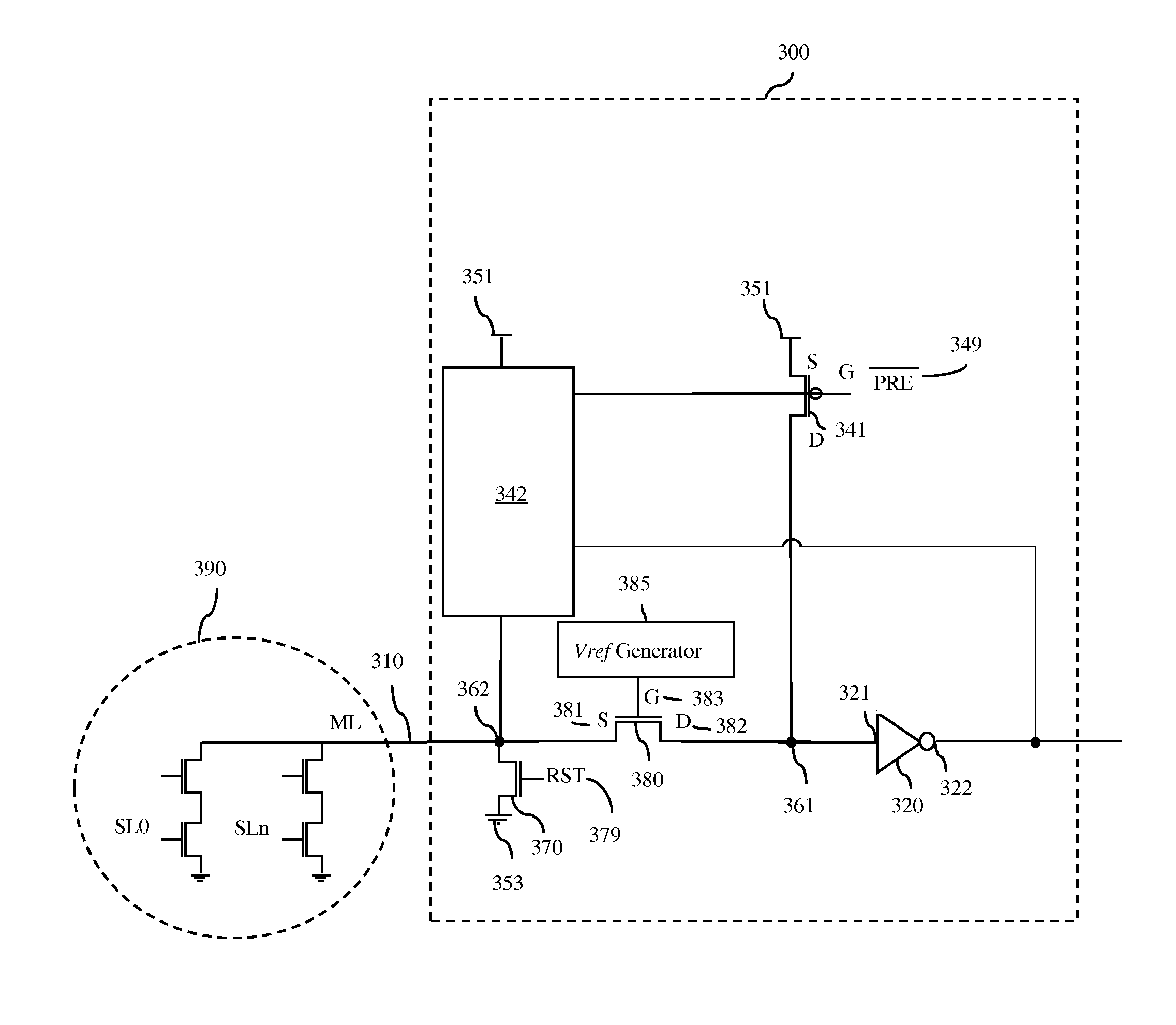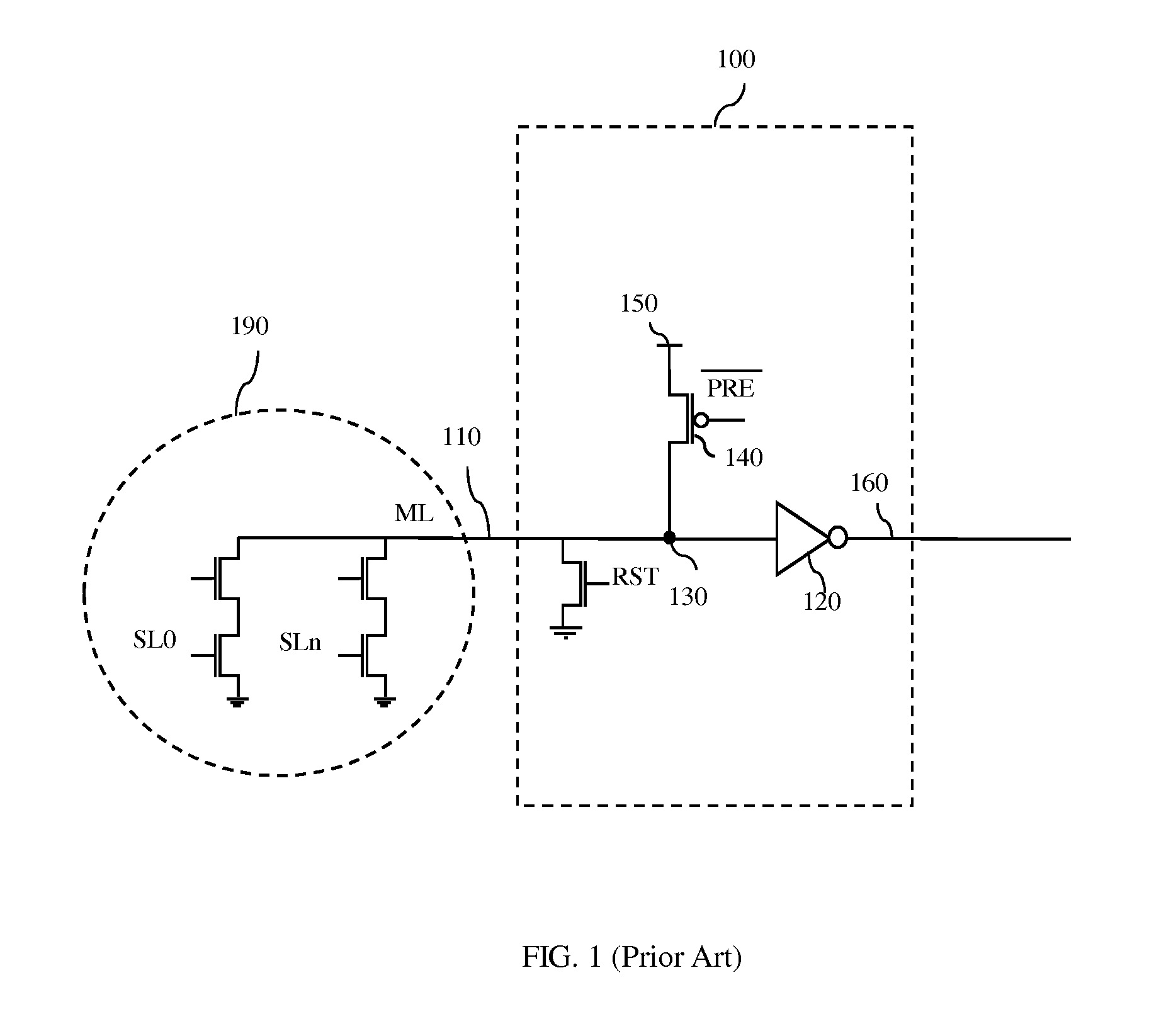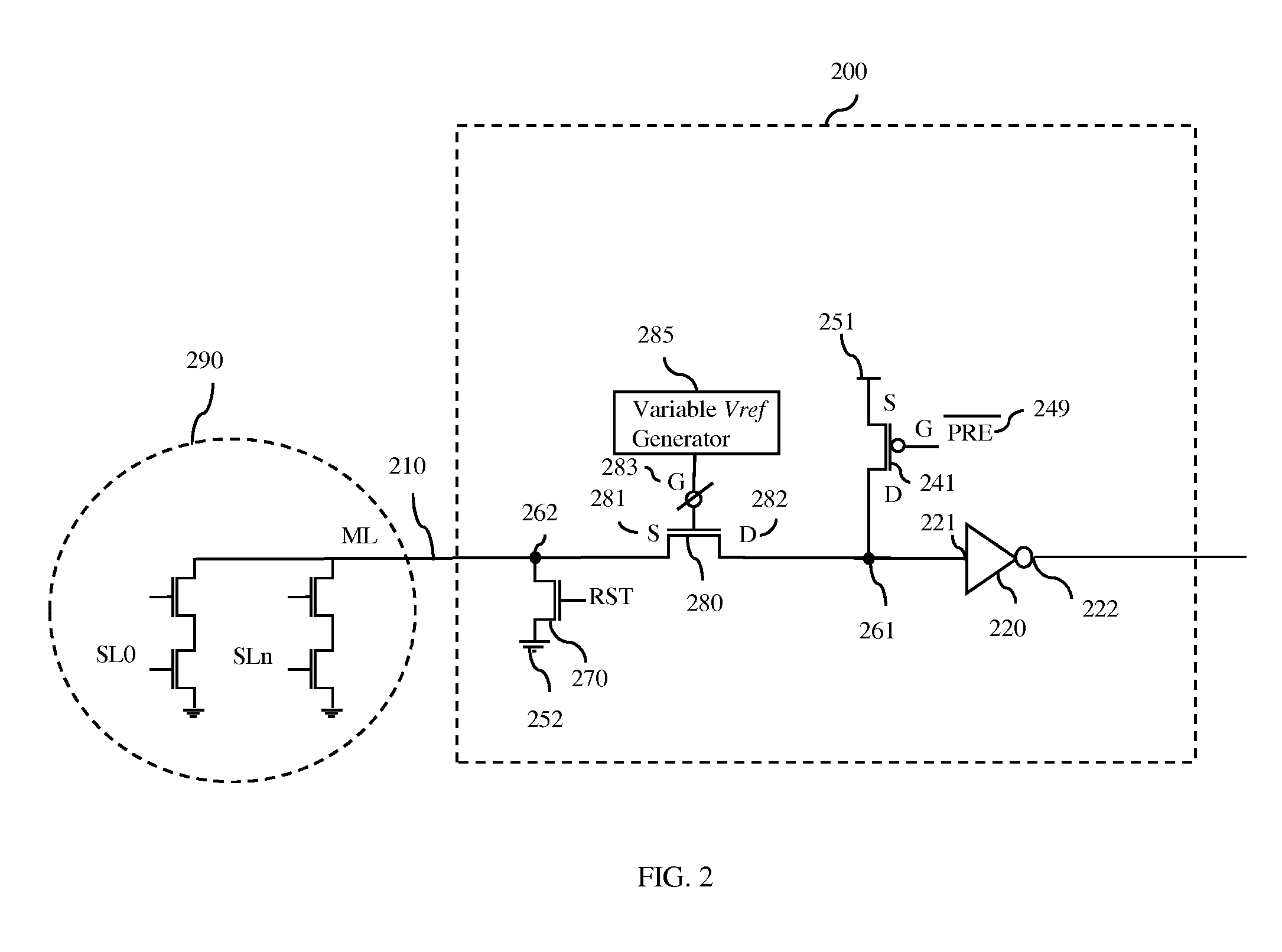Single ended sensing circuits for signal lines
a sensing circuit and signal line technology, applied in the field of single-ended sensing circuits, can solve problems such as performance degradation, and achieve the effects of fast and accurate sensing of the first node, fast pre-charge of the second node, and fast ra
- Summary
- Abstract
- Description
- Claims
- Application Information
AI Technical Summary
Benefits of technology
Problems solved by technology
Method used
Image
Examples
Embodiment Construction
[0029]As mentioned above, memory circuits, such as content addressable memory (CAM) circuits, dynamic random access memory (DRAM) circuits, static random access memory (SRAM) circuits, etc., often incorporate single-ended sensing circuits to sense the value of a signal and, particularly, a small signal on a signal line (e.g., a match line in the case of a CAM circuit, a bit line in the case of a DRAM circuit, a bit line in the case of an SRAM circuit, etc.). Those skilled in the art will recognize that the term “single-ended” refers to the fact that the sensing circuits sense the value of a signal on a single signal line input into a sense amplifier as opposed to comparing the values of signals on two separate signal lines input into a sense amplifier. Recently, technology scaling (e.g., to sub-100 nm dimensions) has resulted in relatively large random variations in manufactured semiconductor devices incorporated into such memory circuits and, particularly, has resulted in relativel...
PUM
 Login to View More
Login to View More Abstract
Description
Claims
Application Information
 Login to View More
Login to View More - R&D
- Intellectual Property
- Life Sciences
- Materials
- Tech Scout
- Unparalleled Data Quality
- Higher Quality Content
- 60% Fewer Hallucinations
Browse by: Latest US Patents, China's latest patents, Technical Efficacy Thesaurus, Application Domain, Technology Topic, Popular Technical Reports.
© 2025 PatSnap. All rights reserved.Legal|Privacy policy|Modern Slavery Act Transparency Statement|Sitemap|About US| Contact US: help@patsnap.com



